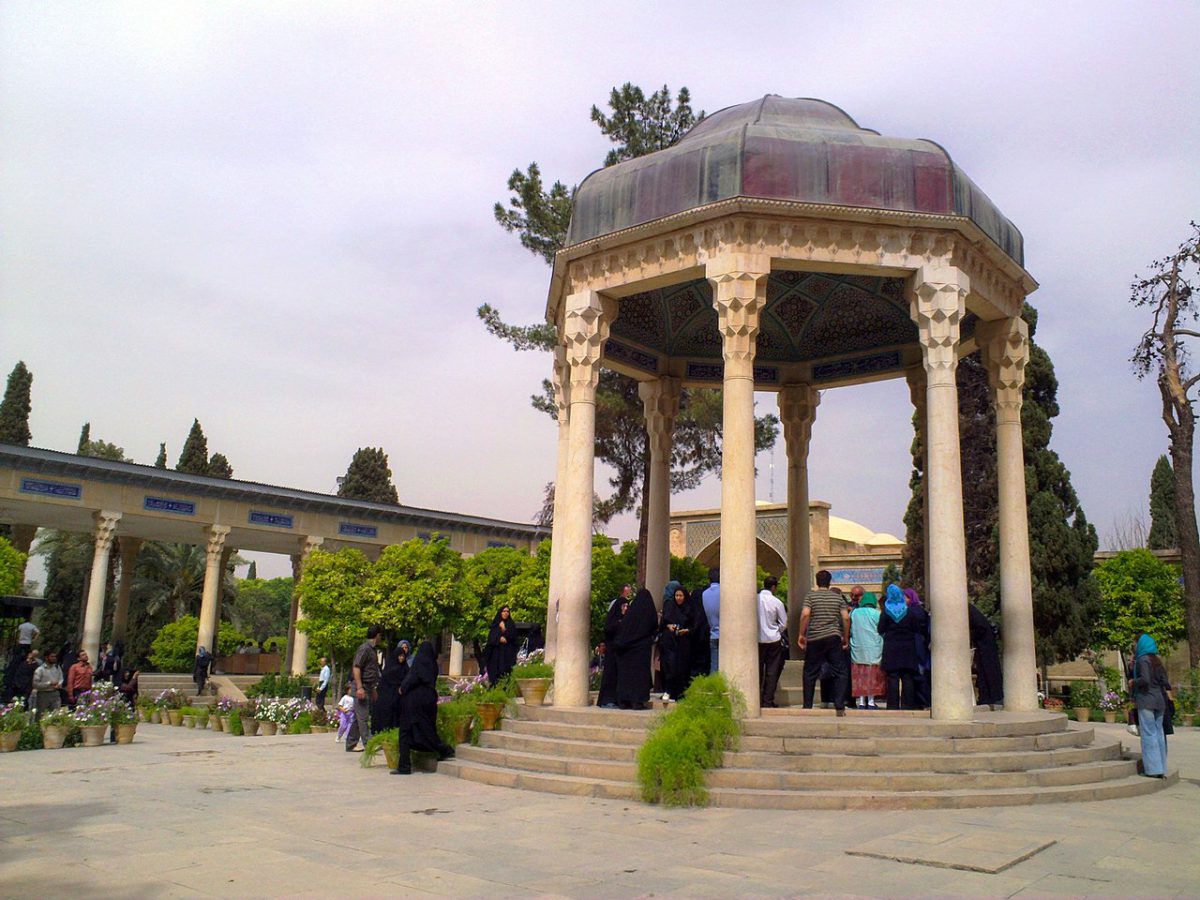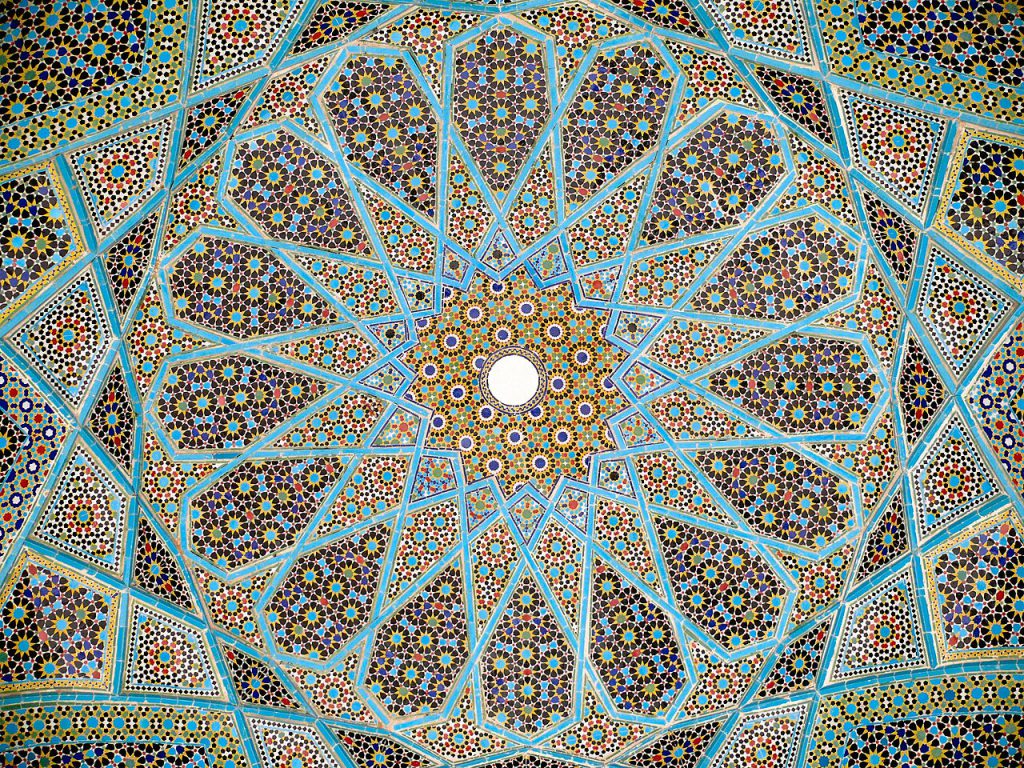Table of Contents
Poet Hafiz has left an indelible mark on the literary world with his works that have transcended time and place. One of the most significant landmarks in Shiraz, Iran, is the tomb of this literary mastermind, known as Hafezieh. Hafez Tomb, surrounded by two exquisite gardens, is a tranquil and serene place that exudes an aura of peace and calmness.
The gardens of Hafezieh are a sight to behold, with rectangular pools, streams, and well-manicured flower beds that create a serene environment for visitors. The scent of orange trees fills the air, and the paths lead to Hafez’s tomb, which is the main attraction of the site. The dome over his grave is beautifully lit at night, providing an enchanting focal point for those who visit.
Aside from the mausoleum, a library dedicated to Hafez scholarship is housed in the former tomb of Qaasem Khan Waali. This library contains over 10,000 volumes that provide a glimpse into the life and works of Hafez, allowing visitors to gain a deeper understanding of his literary genius. The tea house located on the grounds provides refreshments in a traditional setting, allowing visitors to take in the beauty of the surroundings while enjoying a warm cup of tea. Hafezieh is a must-visit destination for anyone who appreciates literature, beauty, and serenity.
Poet Hafiz
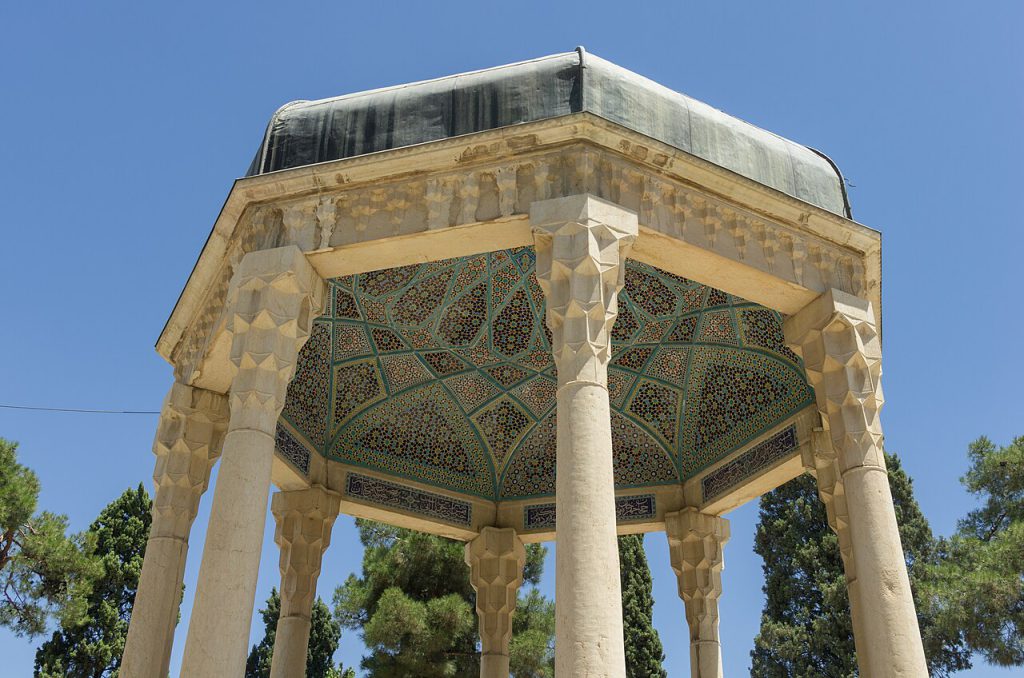
In the hearts of Persians, the city of Shiraz is forever intertwined with the luminous figure of Hafiz, a poet revered as a prophet of love and beauty. His verses resonate deeply, transcending generations and becoming essential to every celebration, from the joyous Nowrouz to the reflective Yalda Night. Hafiz’s genius has captivated minds far beyond Persia, inspiring figures like Goethe, who admired him so much that he wished to learn from the master himself. The presence of Hafiz’s poetry is a given in any Iranian home, where families of all ages find solace and inspiration in his eloquent words.
Each year, on October 22, the nation comes together to honor Hafiz at his tomb, Hafezieh, a site that draws countless admirers eager to pay tribute to his profound impact on Persian culture. His verses, rich with emotion and wisdom, invite readers into a world where love reigns supreme and the beauty of existence is celebrated. This annual homage is not just a remembrance of a great poet; it is a testament to the enduring spirit of his work, which continues to illuminate the hearts and minds of Iranians, fostering a deep connection to their heritage.
History of Hafez Tomb
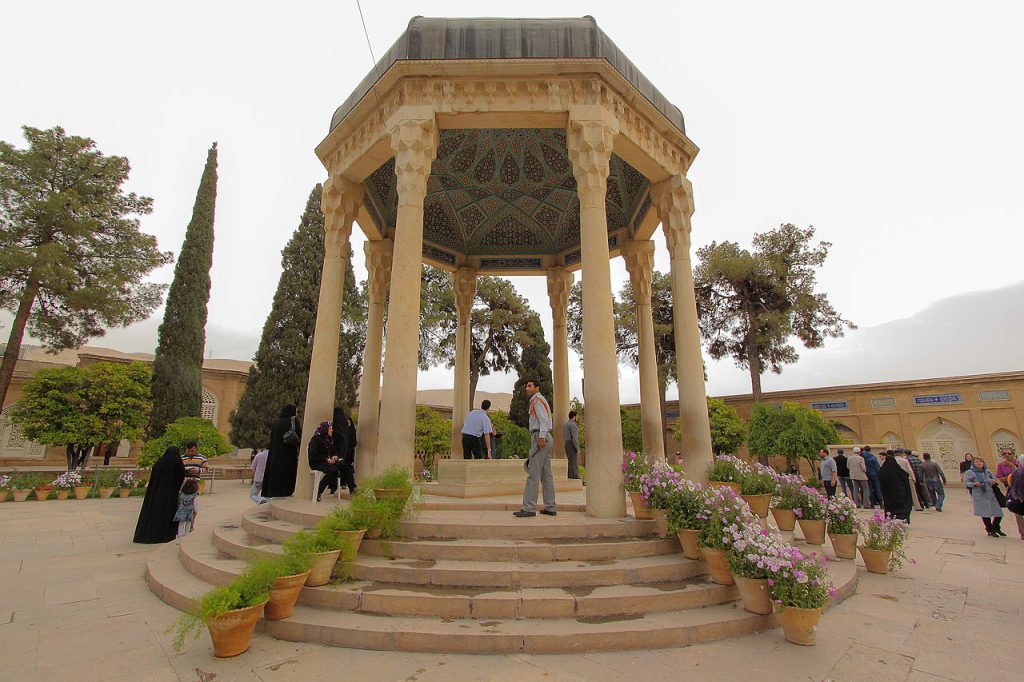
The tomb of Hafez, or Hafezieh, as it is commonly known, has been an integral part of Shiraz’s cultural and literary heritage for centuries. The history of this landmark dates back to 1452, when a small dome-like structure was built near Hafez’s grave by the order of Babur Ibn-Baysunkur, a Timurid governor of Shiraz. The original land where the tomb is situated was more than two hectares wide and was part of Shiraz’s cemeteries. The Golgasht-e Mosalla Garden, which is mentioned several times in Hafez’s poems, was also nearby.
In the Safavid and Afsharian eras, the tomb was renovated twice, once by the order of King Shah Abbas and then by Nadershah Afshar. However, it was during Karim Khan Zand’s reign that a new metal shrine was built, bearing one of Hafez’s famous ghazals, or sonnets, engraved in calligraphy. The shrine has since been destroyed and reconstructed several times throughout history.
Finally, in 1935, the current pavilion structure of Hafezieh was built, designed by the famous French architect and archaeologist, André Godard, who incorporated Zandieh architectural elements into the design. Despite the many renovations and reconstructions, the tomb of Hafez remains a testament to the enduring legacy of this literary genius, attracting visitors from all over the world who come to pay homage to his memory and immerse themselves in the cultural richness of Iran.
Architecture of Hafez Tomb
The architecture of the Hafezieh, as the tomb of Hafez is known, is a testament to the rich cultural heritage of Iran. The complex of monuments is a beautiful blend of traditional and modern architecture, with elements that have been added and modified over centuries. The intricate design of the tomb and its surroundings is full of symbolism and mysticism, reflecting the deep spirituality of Hafez’s poetry.
The entrance to the tomb is intentionally hidden from the main street, creating a sense of mystery and intrigue for visitors. The path to the tomb is lined with nine stairs, representing the nine levels of the sky in Persian literature. The tomb itself is a beautiful sight to behold, with a dome that resembles the hat of a Sufi Darwish. The exterior of the dome represents the sky, while the interior is adorned with tiles in various colors, each representing a different aspect of nature and the divine.
One of the most captivating features of the Hafezieh is the large pool next to the tomb, where visitors can make a wish and toss a coin. This ritual is said to have a high success rate, so be careful what you wish for! The Hafezieh is not just a tomb, but a sanctuary for the soul, a place where visitors can connect with the beauty of Persian culture and the profound wisdom of Hafez’s poetry. The tomb of Hafez is also one of the top places to take pictures in Iran.
How to Get to Hafez Tomb
Traveling to the serene resting place of Hafez is quite convenient using the city’s public transportation.
By Metro
If you prefer the metro, head to Zandieh Station, where you can hop on a bus bound for Narenjestan. Just keep an eye out for the Hafezieh Station stop—it’s your gateway to the poetic beauty that awaits. The journey is smooth, and the anticipation builds as you approach this cultural gem.
By Bus
If buses are more your style, there are several routes that lead directly to Hafez’s tomb. You can take the Dastgheib line to Narenjestan or enjoy a ride from Golestan Square to Namazi. For those near Hafez Intersection, convenient options include the Kolbe Square to Eram Square and the Valiasr to Ziba Shahr lines. Each route offers a glimpse into the vibrant life of the city as you make your way to this beloved literary landmark.
Working Hours of Hafez Tomb
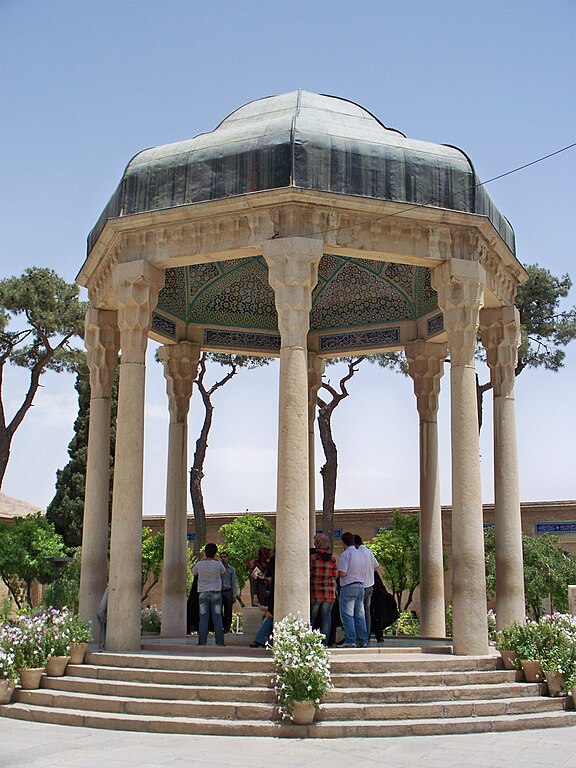
The enchanting Hafez Tomb welcomes visitors daily from 8 a.m. until 10 p.m., allowing ample time to soak in the tranquil atmosphere. This extended schedule makes it easy for both early risers and evening strollers to explore the serene gardens and admire the stunning architecture that pays homage to one of Persia’s greatest literary figures.
Recommended Sightseeing Time of Hafez Tomb
Spending about an hour at Hafez Tomb is ideal for immersing yourself in the serene ambiance of this historic site. This timeframe allows you to stroll through the beautifully landscaped gardens, take in the intricate architecture, and appreciate the poetic inscriptions that adorn the tomb. As you wander, you’ll feel the essence of Hafez’s spirit, inviting you to pause and reflect on his timeless wisdom.
Where to Eat Near Hafez Tomb
Exploring the historical and spiritual richness of Hafezieh can make you work up an appetite, but don’t worry, as Shiraz offers an abundance of dining options to cater to every taste.
Haft Khan Restaurant
Haft Khan Restaurant, one of the best Shiraz restaurants, is a must-visit for traditional Persian cuisine enthusiasts, where you can indulge in a wide variety of grilled kebabs, stews, and rice dishes, all served with aromatic herbs and spices.
Shah Abbasi Restaurant
For those who prefer a more upscale dining experience, Shah Abbasi Restaurant offers a luxurious atmosphere along with mouth-watering dishes, including lamb shank and succulent chicken kebabs, served in elegant surroundings.
Qavam Restaurant
If you’re looking for a cozy atmosphere with a selection of authentic Persian dishes, Qavam Restaurant is a great option. The restaurant is located in a beautifully restored traditional house, featuring a charming courtyard adorned with colorful flowers and a fountain.
Where to Stay Near Hafez Tomb
Atlas Hotel
The Atlas Hotel, nestled in the vibrant heart of Shiraz, offers guests a delightful blend of modern comfort and traditional Persian hospitality. With its contemporary design and well-appointed rooms, the hotel provides a serene retreat after a day of exploring the nearby Tomb of Hafez and the enchanting Musalla Gardens. Guests can enjoy a range of amenities, including a rooftop terrace that boasts stunning views of the city, making it an ideal spot for unwinding at sunset.
Persepolis Hotel
Just a stone’s throw away, the Persepolis Hotel presents a unique opportunity to experience the essence of Shiraz. This establishment is renowned for its exceptional service and warm ambiance, which reflects the city’s poetic spirit. Each room is thoughtfully designed to provide comfort while incorporating elements of Persian art and architecture.
Shiraz Royal Hotel
For those seeking a more budget-friendly option, the Shiraz Royal Hotel offers cozy accommodations without compromising on quality. Its central location allows guests to explore the historical sites and indulge in local cuisine at nearby restaurants, ensuring an unforgettable stay in this city of poets.
Other Attractions Near Hafez Tomb
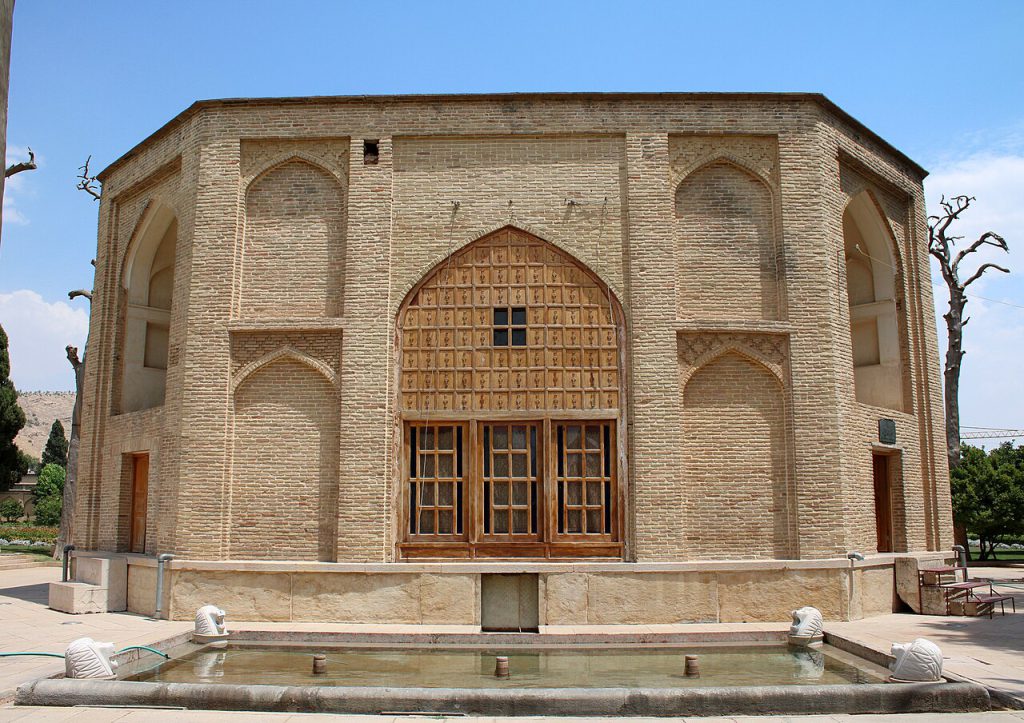
Jahan Nama Garden
Just a short walk away from Hafezieh, you can find the stunning Jahan Nama Garden, which is an excellent spot for picnicking and relaxation. The garden’s beautiful design and peaceful atmosphere make it a popular destination for locals and tourists alike.
Nasir Ol-Molk Mosque
One of the most stunning and must-see attractions in Shiraz is the Nasir Ol-Molk Mosque, also known as the Pink Mosque, located just a few kilometers away from Hafezieh. This mosque is famous for its stunning stained-glass windows that create a kaleidoscope of colors inside the building during the morning hours.
Moreover, you can explore other cultural and historical sites such as the Karim Khan Citadel, Vakil Mosque, Vakil Bazaar, and the iconic Quran Gate, all within walking distance from Hafezieh.
FAQs about Hafez Tomb
Q1: Where is Hafez buried?
A1: Hafez’s tomb is in his hometown of Shiraz, located in the Musalla Gardens. It is in an open pavilion surrounded by eight columns.
Q2: Why is Hafez famous?
A2: He is one of the most famous Persian poets, and his impact is still felt today. He wrote many ghazals about love, spirituality, and protest, which remain significant to Iranians. Many of his poems are used as proverbs or common sayings.
Q3: What did Hafez do?
A3: Hafez was one of the greatest lyric poets of Persia. He received a traditional religious education, taught about the Quran and other religious topics (the name “Ḥāfeẓ” means someone who has memorized the Quran), and wrote commentaries on important religious texts.
Q4: Was Hafez Shia or Sunni?
A4: He was a Sunni Muslim and a follower of Sufism, a mystical approach to Islam that influences his poetry. His work also draws from Quranic literature, Persian legends and myths from the Shahnameh, and other sources.
Q5: Was Hafez a Sufi?
A5: Hafez mainly wrote lyric poetry, or ghazals, which is perfect for expressing the joy of divine inspiration through mystical love poems. As a Sufi, his ghazals often explore themes such as the beloved, faith, and the critique of hypocrisy.
Last Words: Explore the Best of Hafez Tomb with a Customized Tour
Poet Hafiz has greatly influenced literature with his timeless works. His tomb, called Hafezieh, is located in Shiraz, Iran, and is surrounded by beautiful gardens that offer a peaceful atmosphere. The gardens feature pools, streams, and colorful flower beds, creating a calm space for visitors. The fragrant orange trees add to the charm, leading to Hafez Tomb, which is especially stunning at night when its dome is illuminated.
If you want to travel to Iran and truly experience the beauty of Hafez Tomb, consider a Customized Tour. To Iran Tour offers professional Iran Tours and travel packages designed to suit your preferences. Whether you’re interested in history, poetry, or the stunning landscapes of Iran, we create an itinerary that fits your desires. Our knowledgeable guides are dedicated to making your experience memorable and enriching.
So, if you’re planning a trip to Iran and want to make the most of your visit, contact To Iran Tour today for the best Iran Tours.

